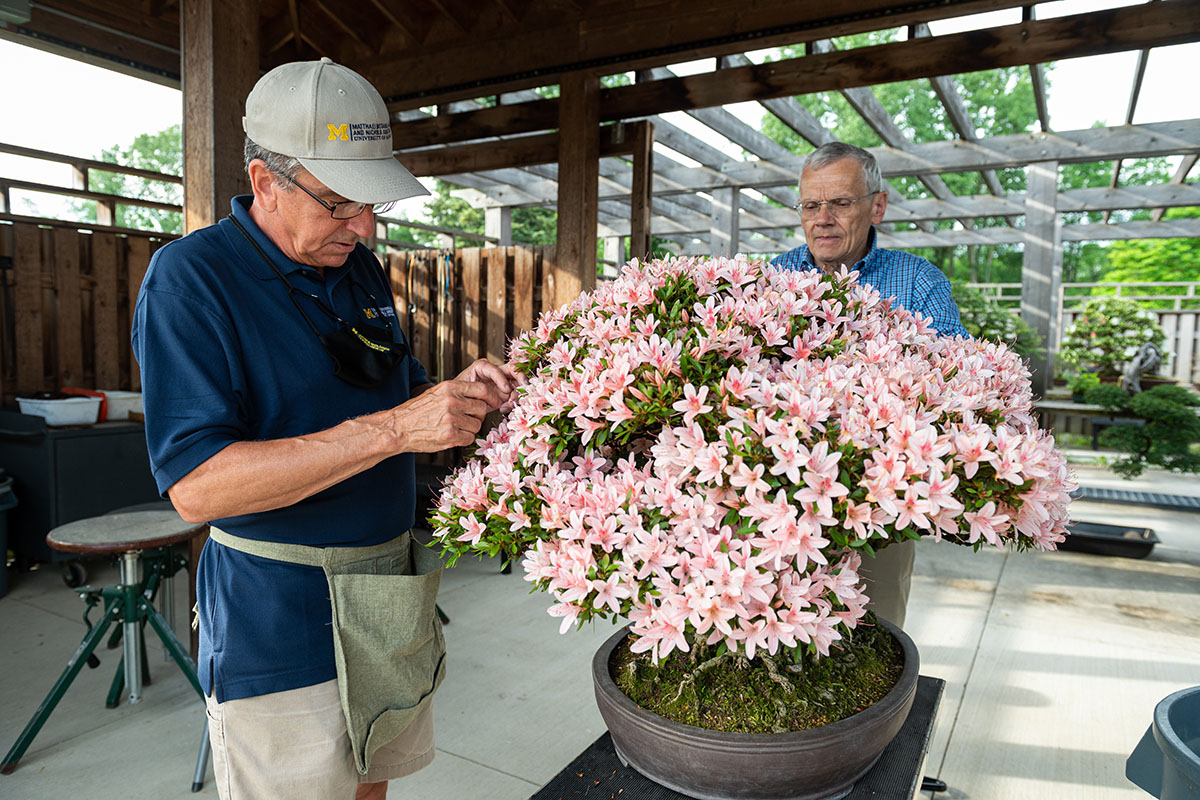Matthaei Botanical Gardens
Free Admission
The Styles
Styles are based on appearances that influence how people view a tree. Their meanings are often cultural as art forms such as painting, dance, and music. Since styled plants must grow, artists sometimes shift styles in to realize a tree’s potential.

Broom
Broom is a variation on the formal upright with deciduous species. Branches are delicately subdivided to make a dome—with and without leaves. This style suggests deft training, as seen with domesticated trees in orchards and streetscapes.
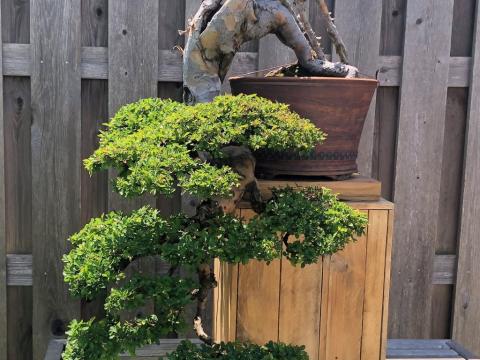
Cascade
A twisting, descending trunk with an apex below the soil and pot base. Most foliage is below the peak of the trunk, hanging downwards. It's reminiscent of the overwhelming power and ferocious weather that sweeps across harsh places like an ocean cliff or a rocky mountain ridge.
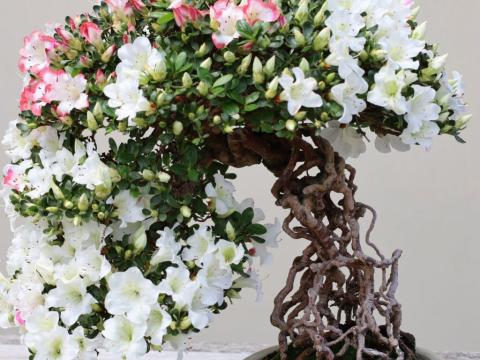
Exposed Root
Usually a variant of informal upright with major roots exposed and often intertwined. Although inspired from places where soil washes away—as in dunes and stream banks—in bonsai the effect is artistically exaggerated. Training can take years or decades to fully develop.

Forest
Compositions of at least five individual trees of the same species, grouped to create a woodland scene. Trunks of varying thickness are placed to create visual interest, and are usually positioned asymmetrically to extend the scene beyond the pot. Forests impart serenity as they age and mature.

Forest on Rock
This specialized and rarely-seen style takes elements from both Root over Rock and Forest. Here, each plant is an individual. Together, they suggest a scene from a rugged environment.
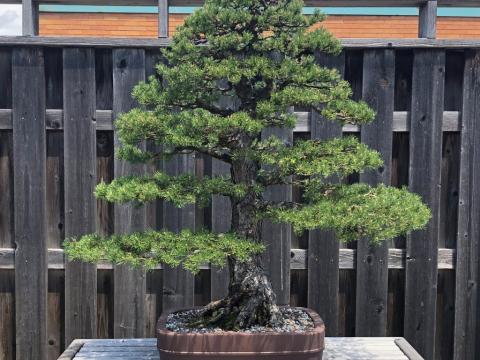
Formal Upright
A straight, vertical trunk with the tip directly centered over the trunk's base, which gradually tapers as it rises. Exposed roots radiate in all directions, and invoking the old age and grand scale of majestic trees that grow in conditions encouraging benign and stable lives.
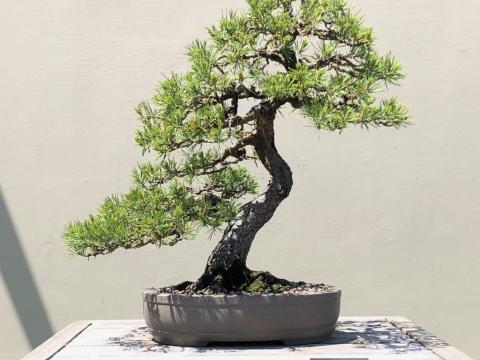
Informal Upright
Features a tapered but sinuous to contorted trunk, with the tip above the roots. Major roots should be to the sides and reaching for the viewer. This style suggests recovery the forces of nature, which deflects and refocuses growth anew.
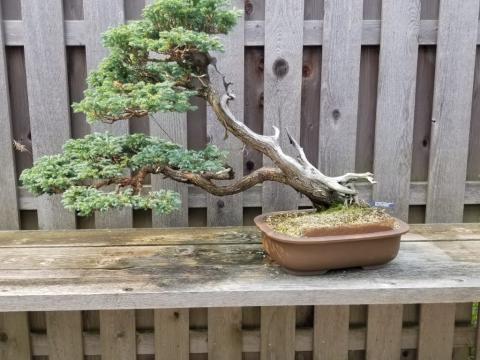
Leaning
Features a trunk where the tip is beyond the limits of the root base and above the roots and pot rim (unlike semi-cascades and cascades, which complete the ‘tipping’ progression.) This style reflects the recovery and capacity of trees in nature that continue to grow despite their reorientation.
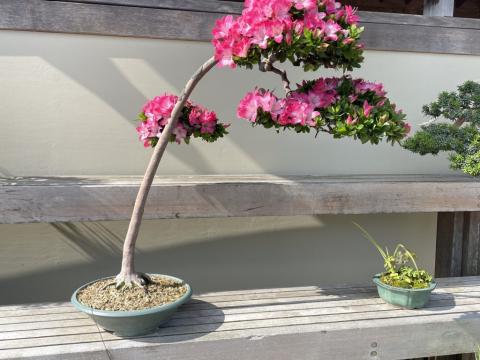
Literati
A slender, leaning trunk that barely tapers. The foliage is primarily in the top third. There is a subtle — even severe — elegance to the entire composition. Literati evokes extreme situations in nature, as well as cultural and political parallels to a social class of scholars.
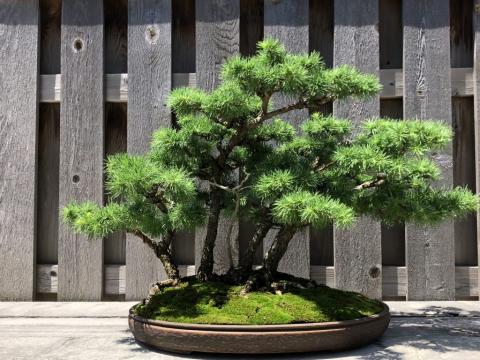
Raft
Raft styles look to be a line or grove of trees, but they are all vertical branches from one horizontal trunk, which itself may be partially buried. The vertical branches have taken on the form of trunks - even to the point of appearing to be independent trees. However, it is always just one plant. This form is inspired by trees in nature that have fallen over and grown in new directions.
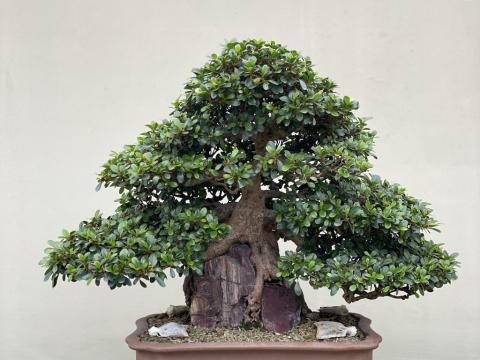
Root Over Rock
Features exposed roots that cling to the surface of the rock. The overall visual interplay must be balanced—even if the rock is dramatic. This style evokes scenes in nature and may imply nearby water, as along a rocky slope or canyon.
Moving to Leadership
A bold future beckons: engaging people new-to-bonsai while deepening our existing relationships and networks. Everything depends on our specimens being exemplary. As we on-board one of the continent’s most important private collections, we’ll be refining our existing collection and expanding our audiences.
We need your help – spreading the word, coming to see the specimens through the year, learning more, and supporting us.
